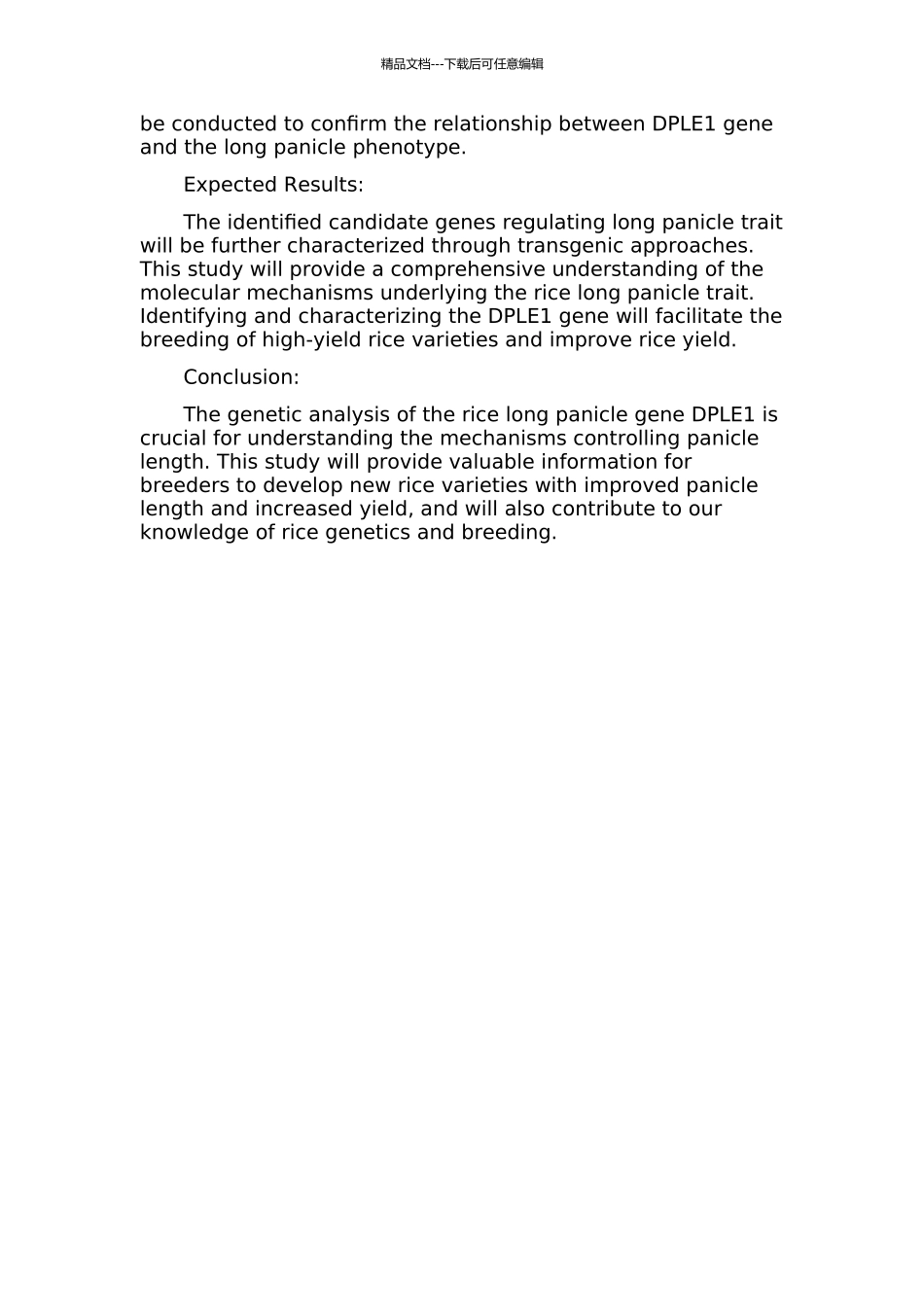精品文档---下载后可任意编辑一个水稻长护颖基因的遗传分析的开题报告Title: Genetic Analysis of a Rice Long Panicle GeneIntroduction:Rice (Oryza sativa L.) provides food for more than half of the world's population. Yield improvement is one of the most important objectives in rice breeding programs. Panicle-related traits, such as panicle length and grain number, are important components of rice yield. Therefore, the identification and characterization of genes related to panicle traits are of great significance to improve the rice yield. Long panicle is an important trait related to high grain yield in rice. Long panicles reduce spatial competition between rice plants, which increases grain yield per unit area. Long panicle genes have been identified and characterized in recent years, and one of the most important genes in this area is the long panicle gene DENSE PANICLE 1 (DPL1) which encodes OsMADS34. DPL1 plays an important role in regulating the development of panicles and increasing the yield of rice. However, it is not clear how DPL1 controls the formation of long panicles.Objectives:The objective of this research is to perform a genetic analysis of the rice long panicle gene DPLE1 that encodes OsMADS34 and to investigate the molecular mechanism of DPLE1 regulating the development of long panicles in rice.Methodology:In this study, we will use a population of F2 and BC1F1 progenies derived from the cross of two rice varieties with different panicle lengths, i.e., a long panicle donor and a short panicle recipient, respectively, to map the DPLE1 gene and its location using molecular markers. The genotype of each individual plant will be determined using PCR amplification and sequencing, and the phenotype of the panicle length will be measured from each plant. In the F2 population, the DPLE1 gene will be mapped using a linkage analysis approach, and in the BC1F1 population, the gene will be mapped using a backcross analysis approach. The co-segregation analysis will 精品文档---下载后可任意编辑be conducted to confirm the relationship between DPLE1 gene and the long panicle phenotype.Expected Results:The identified candidate genes regulating long panicle trait will be further characterized through transgenic approaches. This study will provide a comprehensive understanding of the molecular mechanisms underlying the rice long panicle trait. Identifying and characterizing the DPLE1 gene will facilitate the breeding of high-yield rice varieties and improve rice yield. Conclusion:The genetic analysis of the rice long panicle gene DPLE1 is crucial for understanding the mechanisms controlling panicle length. This study will provide valuable information for breeders to develop new rice varieties with improved panicle length and increased yield, and will also contribute to our knowledge of rice genetics and breeding.

